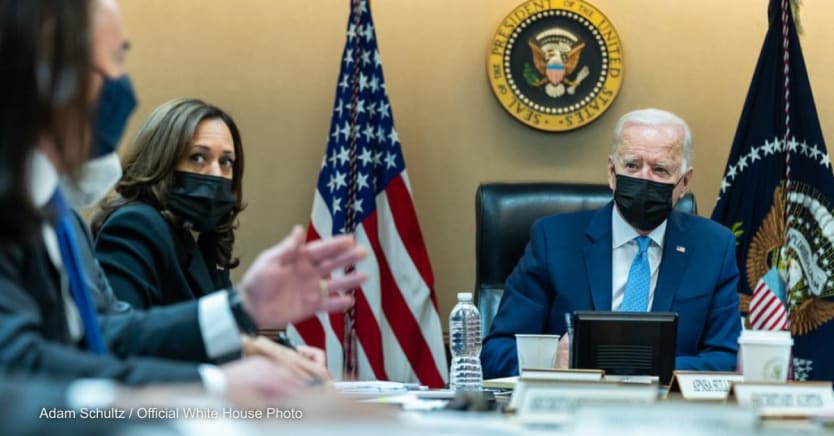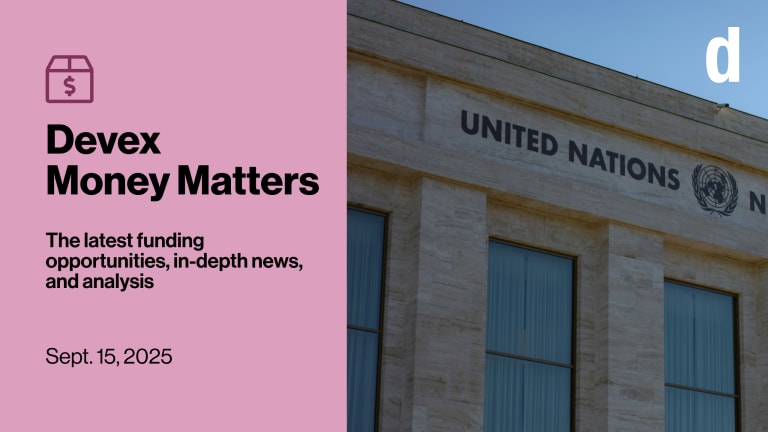
To mark International Women’s Day 2022, the Biden-Harris administration released its 2023 budget with a request of $2.6 billion for the advancement of gender equality globally from the U.S. Congress. This is about a $300 million inflation-adjusted increase from the previous highest request in 2014. Yet, it does little to move the U.S. up the global gender equality spending leaderboard. Per rankings laid out by the Organisation for Economic Co-operation and Development, the U.S. currently sits third from last in official development assistance for gender initiatives.
Dollar signs in the millions, billions, and even trillions are common in presidential budget requests, but what does $2.6 billion really mean for foreign assistance?
In practice, $2.6 billion is not a sizable request when compared to the sticker price for international climate finance — $11 billion — or foreign health assistance — $10 billion. It certainly is not enough to implement the changes to make foreign assistance more effective or shorten the more than 135 years it will take to close gender gaps. In fact, $2.6 billion makes up less than 9% of the bilateral foreign assistance request.
This is not only a women’s issue; this is an everyone issue and calls for far greater and sustained investment.
—We know that when gender considerations are embedded in solutions, the longevity and positive impacts increase exponentially. Take women, peace, and security, for example. By including women in the peace process, the probability of a peace agreement lasting 15 years increases by 35%.
Funding global gender equality initiatives also has the potential to grow the global economy by $28 trillion — about the combined 2017 gross domestic product of the U.S., Germany, and the U.K. So, what better time than now for the Biden administration to invest in global gender equality and human rights?
Yet the current budget request from the administration is insufficient for the transformative change needed if it is serious about the commitment to gender equality. Gender is not a stand-alone category in U.S. foreign assistance. Instead, it is a subcategory incorporated into health, disaster assistance, development assistance, and many other key sectors.
It is unclear how much money is explicitly designated to address the most pressing issues for gender equality, which would be a meaningful improvement over merely checking boxes for gender.
There are three actions the Biden-Harris administration can take immediately to bring gender to the forefront.
1. Increase programmatic funding and join leading peers — Canada, Sweden, Iceland — to integrate gender throughout the foreign policy portfolio and commit to a 20% allocation of foreign assistance toward gender equality.
2. Increase gender staffing and provide additional gender training within foreign policy institutions, so there are dedicated and qualified gender staff within country, regional, sectoral, and programmatic offices, missions, and bureaus. This is not simply about diversifying staff; it is also about increasing advisers with expertise in gender. It is about making sure climate programs take into account the impacts and needs of women and girls, and ensuring contracting officers ensure gender considerations are front and center.
3. Increase investment in women’s rights organizations, especially in lower- and -middle income countries, so that the voices and insights of women are included more, and programming is being designed and implemented by those most impacted.
Fortunately, the Biden-Harris administration does not have to wait to act. Congress has already taken steps to push ahead on gender initiatives. In March, Congress passed a spending bill providing funds for gender advisers and gender training across all USAID overseas missions, regional platforms, and the Washington Bureau. The bill also highlights the need to have gender staffing at the Millennium Challenge Corporation, as well as the importance of scaling up gender and development work at the U.S. International Development Finance Corporation.
The administration can and should set these three priorities in motion today. It should immediately start increasing gender staffing and gender training throughout the foreign policy portfolio and start to scale up programmatic funding — including funding women’s rights organizations.
This is not only about women’s rights. It is about effective programming that works for women and girls, men and boys, and non-binary people. This is about ensuring the economy is stronger, that the world is safer, and that taxpayer dollars are being spent more effectively. This is not only a women’s issue; this is an everyone issue and calls for far greater and sustained investment.








